When can “terrorists” or “gunmen” become “normal” politicians in Ireland?
It is a question that has engaged many Irish minds over the past few weeks, as the traditional major parties of Fine Gael and Fianna Fáil try to come to terms with the sudden and unexpected surge in support for their bitter foes in Sinn Féin.
Read More: Sinn Féin's Mary Lou McDonald gets most votes but no Taoiseach chosen
Not only were the establishment parties horrified by the electoral success of the political wing of what used to be the Provisional Irish Republican Army (IRA), they seem to be engaged in a competition to see who has the most disdain for those they associate with a campaign of bombings, shootings, murder, and mayhem.
Vote Fianna Fáil, get Sinn Fein? Think carefully before you cast your vote this Saturday.
Publiée par Fine Gael sur Mercredi 5 février 2020
No Government was formed when the new Dáil (Irish parliament) met for the first time in Dublin last Thursday because both Fine Gael and Fianna Fáil said they could not countenance doing a deal with Sinn Féin.
They are still shocked that the left-wing republican group is now the most popular party on the island.
Not so long ago, Sinn Féin representatives were banned from the British and Irish airwaves, and from traveling to the United States. Their new leader Mary Lou McDonald, a Dublin woman with no connection to the “armed struggle”, has said that the General Election showed a real desire for change.
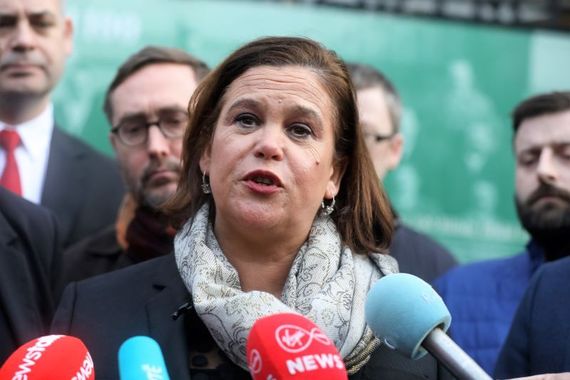
Mary Lou McDonald, president of Sinn Fein (RollingNews.ie)
Read More: Ireland could see another General Election if no government is formed
Yet, when her party began a series of rallies to drum up support around the country on Monday night, they were accused by An Taoiseach (Prime Minister) Leo Varadkar of engaging in a “campaign of intimidation and bullying”.
A huge crowd turned up at a Cork hotel on a cold Monday night in February to hear Sinn Féin leader Mary Lou McDonald describe his comments as a “hysterical over-reaction”.
Well hello Cork! Great to be here #AGovernmentForChange pic.twitter.com/uJVQ2u1N6O
— Mary Lou McDonald (@MaryLouMcDonald) February 24, 2020
Her party were the big winners in the February 8 poll, but the traditional “big two” are going out of their way to keep them out of talks to form a government.
Either Fianna Fáil or Fine Gael has been in Government since the Irish Free State was founded in 1922. The new Dáil has been suspended for a fortnight because they have ruled out doing any kind of deal with the shadowy figures they have demonised for so long.
Fianna Fáil leader Micheál Martin made it a key issue of the election campaign that he would under no circumstances get into bed with the political wing of the “provos”. And, instead of respecting the 24.5% of first preferences achieved by Sinn Féin, a campaign of demonization has gone on in recent days.
Micheal Martin, head of Fianna Fail (RollingNews.ie)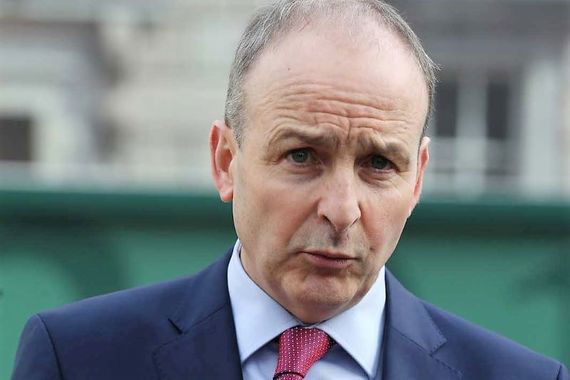
Read More: A Fianna Fáil Sinn Féin coalition is Ireland’s best choice
Even the head of the Gardai, the Republic’s police force, has weighed in with comments about the shadowy figures hovering in the background.
However, those with a knowledge of Irish history might argue that the current hysteria about the rise of Sinn Féin is nothing new in Irish politics.
Cumann na nGaedhal (now Fine Gael) fought the 1932 General Election on the basis that their old Civil War foes, Fianna Fáil, were shadowy figures brandishing guns. After ten years in power, they implored voters to keep “the shadow of the gunman” away from their doors.

A Cumann na nGaedhal election poster from 1932
“The gunmen and communists are voting Fianna Fáil today,” they declared on the day of the election, only for the voters to give a mandate to the party which had the backing of thousands of members of the IRA.
Fianna Fáil promised to free IRA prisoners ten years on from the terrible Civil War, to abolish the Oath of Allegiance to the British monarch, and to reduce the powers of the (British) Governor-Genera l in Ireland.
The party played down its violent past and produced popular social and economic policies, much as Sinn Féin have done this year. In both cases, they tapped into the anger many people felt towards an arrogant Government, out of touch with ordinary people, who had been in power for a decade.
The outgoing Government described their policies as disastrous “pie in the sky” ideas that would bankrupt the new state, just as Fianna Fáil and Fine Gael today claim Sinn Féin's 2020 policies could wreck the economy.
Read More: Looking at a grand coalition for Ireland’s government
A number of Fianna Fáil members brought guns into the Dáil following the 1932 election, in the belief that the outgoing Government would refuse to hand over power. But W.T. Cosgrave, the leader of Cumann na nGaedhal, was anxious to adhere to the principles of democracy and the former gunmen went on to rule for the next 16 years.
When ‘The Troubles’ erupted in the six counties of Northern Ireland following the Civil Rights marches of the late 1960s, young people in republican areas used to joke that the initials IRA stood for “I Ran Away”.
But, following atrocities committed by the British Army in places like Ballymurphy and the Bogside in Derry, the “provisionals” as they became known saw a massive surge in recruitment of volunteers. Their “armed struggle” campaign against the British State went on for almost three decades.
Politicians in the Republic were alarmed. Amid rioting in Northern Ireland, two members of a Fianna Fáil Government went on trial for trying to smuggle arms to the IRA. One of them, Charles Haughey, went on to become Taoiseach (or Prime Minister) of the Republic after being found not guilty in 1970.
‘The Troubles’, as the conflict became known, lasted for almost three decades and resulted in the loss of 3,500 lives. Before the Good Friday Agreement of 1998, it would have been unthinkable that the party of “shadowy figures” like Gerry Adams and the late Martin McGuinness would become the most popular party south of the border one day.
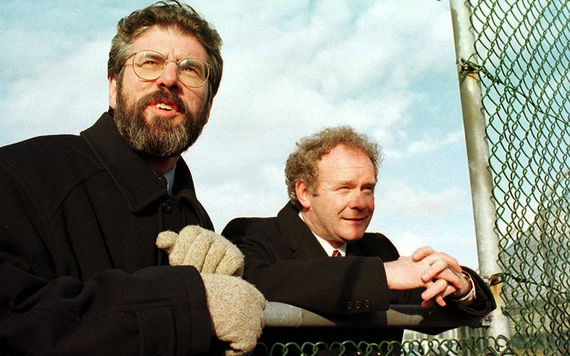
Gerry Adams and Martin McGuinness (RollingNews.ie)
Read More: Sinn Féin's left-leaning platform was the key to victory in historic election
Sinn Féin and the IRA were demonised and despised in the Republic, their spokesmen banned from speaking on the radio or TV, as the public became increasingly outraged by atrocities in places such as Enniskillen, Omagh, and Belfast’s Shankhill Road. It was a terrible time.
In the midst of the horror, John Hume – leader of the nationalist SDLP – began a series of talks with Sinn Féin president Gerry Adams in a bid to bring an end the armed struggle in the mid-1980s.
John Hume and Gerry Adams in 1994 (RollingNews.ie)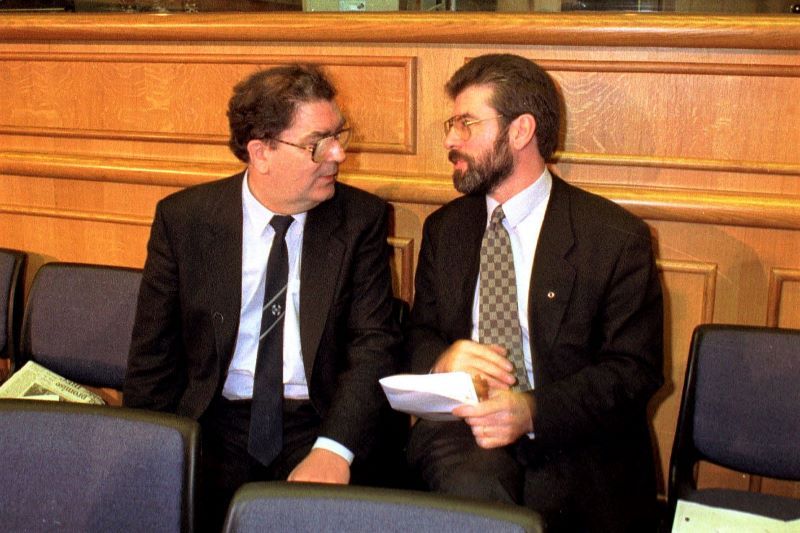
Read More: Irish general election a Sinn Féin con job
When word got out that the leaders of the North’s two main nationalist parties were talking to each other, people in Dublin were outraged. It was impossible to pick up the Sunday Independent in the late 1980s or early 1990s without reading venomous weekly attacks on what became known as the Hume-Adams talks.
Funnily enough, the same paper is still attacking Sinn Féin on a weekly basis today.
Hume was condemned for talking to the “terrorists” but he persisted with his aim of bringing an end to violence, even though his own party suffered at the ballot box as a result of his success in bringing the ‘Provos’ in from the cold.
Hume changed the course of Irish history, despite relentless attacks from the Dublin establishment and media, and having to witness the rise of Sinn Féin at the expense of his own more moderate party. But he felt it was a price worth paying.
The controversy over bringing gunmen into the Irish political system crossed the Atlantic in 1994. Four Irish American senators, led by Ted Kennedy, wrote to then-President Bill Clinton to request the granting of a visa for Adams to visit the USA.
Although it might seem unthinkable for an Irish “terrorist” to be invited to the White House in the post-9/11 world, the Hume-Adams talks and the push for a peace process strengthened their case.
Despite opposition from the British, they argued that allowing Adams to travel to the US would boost the cause of “moderates” within the provisional movement who were in favour of a ceasefire.
Four years later, the signing of the Good Friday Agreement – which brought peace to war-torn Northern Ireland – vindicated the arguments of those, like Hume and Kennedy, who argued it was time to bring the “terrorists” and “gunmen” in from the cold.
“If you keep reaching desperately for the past, it means you are not up for the future,” Sinn Féin leader McDonald told the new Dáil on a historic day for her party on February 20. They had gone from just one TD in 1997 to 37 in 2020.
On the same day, Micheál Martin said he could not go into government with her party because of their efforts to “legitimise the murderous sectarian campaign” of the Provisional IRA.
Perhaps, though, those who voted for Sinn Féin for the first time this month have more of an interest in the party’s policies on homelessness, health care, and massive inequality than their connections to a terror campaign which is now over 20 years old.
Having Sinn Féin representatives engage in vicious arguments in the Dáil, rather than attempting to justify appalling murders, shows how far we have come from the dark and terrible days of ‘The Troubles’.
Perhaps, finally, the gunmen have been taken out of Irish politics and it’s time to leave the ghosts of the past behind.
-- *A digital journalist based in Galway, Ireland, Ciaran Tierney won the Irish Current Affairs and Politics Blog of the Year award. Find him on Facebook, Twitter, or on his website CiaranTierney.com.
This article was submitted to the IrishCentral contributors network by a member of the global Irish community. To become an IrishCentral contributor click here.
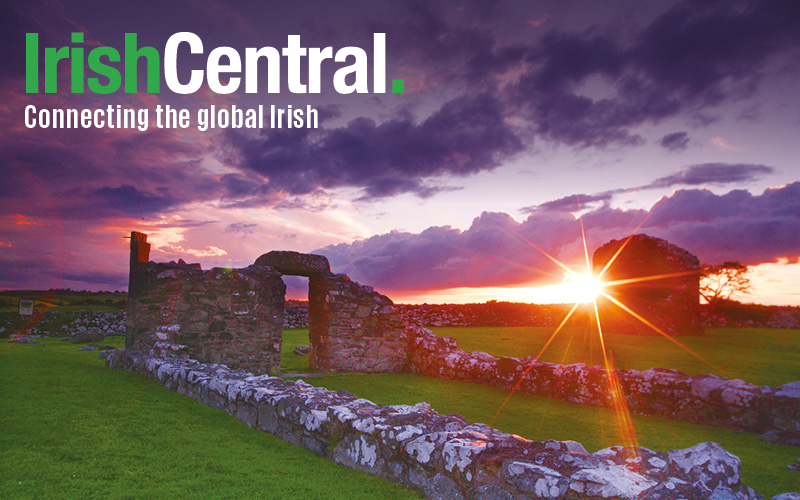

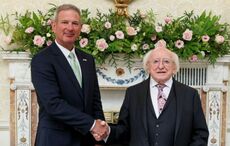

Comments